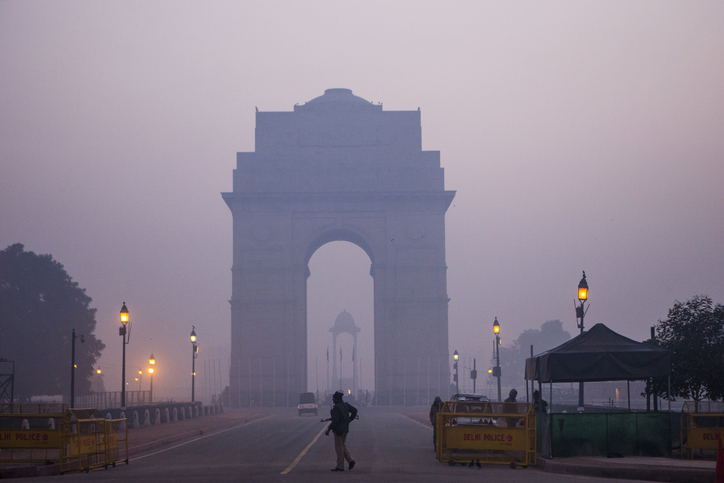The Commission for Air Quality Management (CAQM) has ordered the activation of Stage II of the Graded Response Action Plan (GRAP) across Delhi-NCR, effective from October 22, following a sharp decline in air quality. Delhi’s daily average Air Quality Index (AQI) reached 310 on Monday, falling into the ‘Very Poor’ category, triggering stricter pollution-control measures.
Weather forecasts from the India Meteorological Department (IMD) and Indian Institute of Tropical Meteorology (IITM) suggest that air quality will remain in the ‘Very Poor’ range over the coming days due to unfavorable meteorological conditions. In response, the CAQM convened a special meeting to assess the worsening air quality situation and decided to enforce Stage II of GRAP along with the Stage I measures that are already in effect.
Under this next phase of GRAP, additional efforts will focus on tackling dust pollution and limiting emissions from diesel generators, a move aimed at curbing further deterioration. Authorities will deploy mechanical and vacuum road sweepers, conduct water sprinkling operations on key roads, and intensify inspections at construction sites to enforce strict dust control measures.
Meanwhile, power supply agencies have been instructed to ensure uninterrupted service to discourage the use of diesel generators across all sectors, including residential, commercial, and industrial areas.
The CAQM has also appealed to the public to reduce their use of personal vehicles, encouraging them to rely on public transportation to minimize emissions. Citizens are urged to avoid dust-generating activities such as open burning of waste and non-essential construction work during the winter months, when pollution levels typically spike.
The health impact of the rising pollution levels is already being felt. Dr. Rajesh Chawla, a senior consultant at Indraprastha Apollo Hospital, reported an increase of 10-15% in respiratory cases, with many patients experiencing severe exacerbations of asthma, chronic obstructive pulmonary disease (COPD), and other respiratory conditions.
“The air pollution levels are climbing faster this year, leading to a surge in hospital admissions,” Dr. Chawla said. “Even though people are taking precautions like sealing windows and doors, infections are rising due to toxic air.” The demand for medications to manage respiratory diseases has also increased in response to the worsening air quality.
The CAQM’s advisory reflects growing concern among environmental and health officials, with the situation likely to escalate in the coming weeks if emissions are not brought under control. Authorities emphasized that all stakeholders—including municipal agencies, pollution control boards, and public health departments—must coordinate closely to mitigate the impact.
Delhi’s pollution levels typically spike in late October and November, driven by a combination of crop residue burning in neighboring states, vehicular emissions, and cooler weather that traps pollutants closer to the ground.
With GRAP-II now in effect, the government hopes to slow the deterioration and protect public health during this critical period. The CAQM has assured residents that efforts are being made to improve air quality and that compliance with the plan is crucial to reducing the pollution burden on the region.
(Inputs from ANI)




















